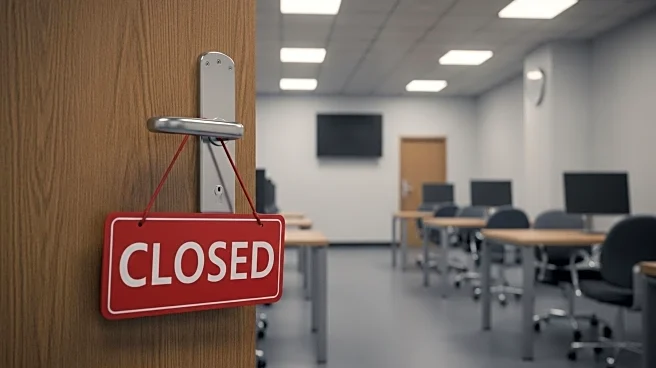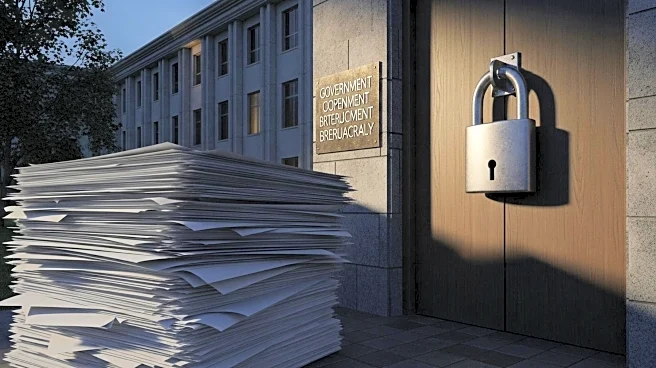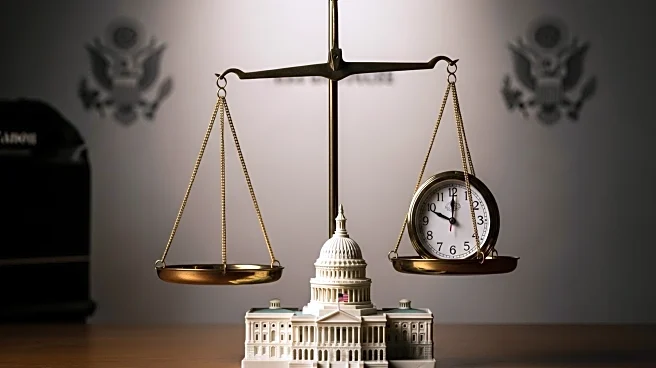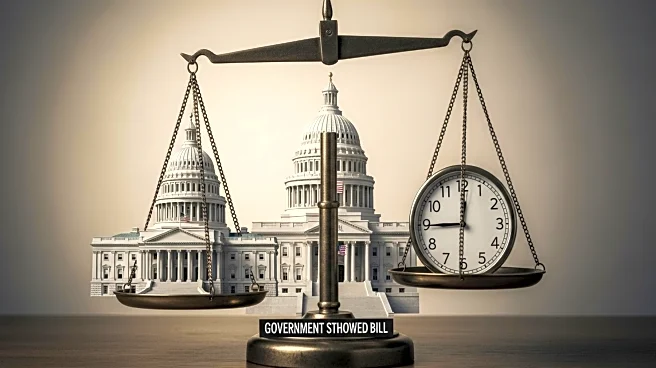What is the story about?
What's Happening?
The ongoing government shutdown has entered its second week, prompting federal agencies to revise their operational strategies and prepare for additional furloughs. Agencies have been utilizing carryover funds from previous fiscal years to maintain operations, but these funds are depleting. The Interior Department's Bureau of Land Management, for instance, is set to reduce its workforce from 3,300 to 1,000 employees once its Wildland Fire Management account funds are exhausted. Similarly, the Census Bureau is using carryover funds for a critical decennial census test, but may furlough employees if the shutdown persists. The Internal Revenue Service plans to furlough around 35,000 employees, nearly half of its workforce, starting Wednesday. Other agencies, such as the Smithsonian Institution, have announced closures due to depleted funds. The Senate is scheduled to vote on a bill to reopen the government, but it is unlikely to pass without sufficient support.
Why It's Important?
The prolonged shutdown is affecting over 620,000 federal employees, with numbers expected to rise as agencies exhaust their carryover funds. This situation impacts various sectors, including emergency services, public health, and national security. The IRS furloughs could delay tax processing, affecting millions of Americans. The Smithsonian's closure impacts cultural access and tourism. The shutdown also poses risks to public safety, as agencies like the FAA face increased absenteeism, potentially disrupting air travel. The economic implications are significant, with federal employees facing financial uncertainty and potential delays in services that rely on government operations.
What's Next?
If the shutdown continues, agencies may recall employees for critical services, as seen in past shutdowns. The Homeland Security Department plans to recall 1,700 employees, while the Justice Department may adjust furloughs based on service needs. The Senate's upcoming vote on a funding bill could determine the shutdown's duration, but political divisions make its passage uncertain. Agencies may need to further adapt operations, potentially increasing furloughs or recalling employees as funds deplete. The situation remains fluid, with potential impacts on public services and employee morale.
Beyond the Headlines
The shutdown highlights the vulnerability of federal operations to political impasses, raising questions about the sustainability of relying on carryover funds. It underscores the need for contingency planning and the potential for long-term impacts on government efficiency and employee trust. The situation may prompt discussions on legislative reforms to prevent future shutdowns and ensure stable funding for critical services.
AI Generated Content
Do you find this article useful?













